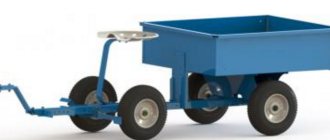- List of perishable goods (types and classification)
- Features of transportation and labeling
- Methods of transportation by rail
- Methods of transportation by road
- Features of using air transport
- Features of the use of sea transport
Documentation:
- Rules for the transportation of perishable goods by road
- Rules for the transportation of perishable goods by rail
Perishable goods are a group of products or sensitive goods that, during transportation and storage, require strict adherence to temperature conditions, certain humidity, compliance with sanitary and hygienic requirements and deadlines for delivery. To ensure that products retain their quality during transportation, logisticians design transportation to ensure an uninterrupted cold chain. Transport included in the chain is either equipped with special equipment or designed to store goods.
Classification and general definitions
In this case, the name emphasizes the defining characteristic - damage to cargo during long-term storage. To slow down harmful processes, use a decrease in temperature. This reduces the activity of bacteria and other microorganisms and prevents rotting. But it is necessary to understand that freezing damages organic tissue.
When transporting some products in winter, you have to perform the reverse procedure to maintain heat in the transport volume. Sometimes additional ventilation is required, or high-quality sealing with reliable prevention of access to fresh air.
For classification according to temperature conditions, cargo is distinguished:
- deep frozen – less than -18 °C;
- frozen – from -6 °C to -18 °C;
- refrigerated – from -4 °C to +4 °C;
- fresh – from +4 °C to +14 °C;
- heated - the value is set by the technological map.
Exact parameters for individual types of products are contained in annexes to the current rules for handling perishable goods (part of the current road transport regulations). The table shows the most common examples:
| Name | Recommended temperature during loading/during transportation (°C) | Notes |
| Frozen meat | -8/ -12 or less | It is prohibited to use routes lasting more than 12 hours. |
| Milk (unprocessed) | from +2 to + 6 | The lower/upper limit is controlled in the winter/summer season, respectively. For transportation, specialized vehicles with tanks are used. |
| Bananas | from +12 to +15/ from +1 to + 11 | Transported in an unripe state. Additionally, storage in an inert gas environment and special pre-treatment technologies are used. |
| Cherries | +3/ +1 to +2 | The maximum travel time is 72 hours. |
Also included in this category are:
- fruits and meat, other products of plant and animal origin;
- cheeses, curdled milk, sausages and other products created at specialized enterprises (manufacturing, catering);
- blood, donated organs, some pharmaceuticals;
- flowers in pots and other living (freshly cut) plants.
Requirements for the shipper
No less important requirements are imposed on companies and organizations that send cargo. Otherwise, penalties will be sent to the company's name. Here are the most important requirements:
- To transport animal raw materials and meat, the company is obliged to provide a special policy on passing veterinary and sanitary supervision;
- If products are sent from a territory where quarantine conditions are noted, the sender is required to obtain a permit and special documents for perishable products and goods;
- The sender must provide the shipping company with a delivery note. It must indicate the actual permissible temperature for the goods before loading and the maximum possible transportation time. The general condition and characteristics of the packaging are also indicated;
- You cannot transport products of different categories at the same time. It is allowed to transport only those that require the same temperature;
- Frozen products, like perishable goods, must be packed very tightly;
- When transporting fresh or refrigerated products, you need to ensure that everything is carefully packaged and that air passes between the containers. There must be a distance of at least 30 cm between the load and the ceiling.
The transport company engaged in transportation has the right to check its condition, as well as the strength and reliability of the packaging, before loading the goods. During the verification process, the carrier company independently sets possible deadlines. As for the sender of the goods, he is responsible for packing, and he is also obliged to ensure that the premises in which transportation is carried out are completely sealed. As soon as perishable goods arrive at the desired address, the recipient must provide conditions for high-quality cleaning of the cargo from debris and product residues.
Packaging and loading work
The current rules for the transportation of perishable goods by road establish special requirements for certain categories:
- Only serviceable, washed and dried containers that do not contain foreign odors are suitable.
- Vegetables and fruits are prepared for loading in advance. They are placed in a suitable container tightly, effortlessly, flush with the sides of the boxes to prevent contact with parts of the vehicle body during transportation.
- If the stalk is missing, the duration of transportation of cherries is reduced to 24 hours.
- Meat carcasses are cut, parts of the gastrointestinal tract are removed, and frozen. They use parchment and other spacers made of neutral materials, boxes made of durable corrugated cardboard. The surface of chilled meat should be dry, without signs of organic damage.
- Chilled poultry is transported in containers with gaps for better ventilation. Egg packaging must contain damping inserts to prevent excessive mechanical stress.
- Products with different storage temperatures must not be transported simultaneously in one vehicle. If this condition is met, the duration of the journey is then checked. Compliance is taken into account for the position that deteriorates faster.
Even when using whole high-quality containers, goods from the following list are not transported together with other products:
- salted, smoked, chilled and frozen fish;
- margarine, yeast, caviar, cheeses;
- chilled meat, smoked meats;
- garlic and other vegetables with a strong smell.
The rules for transporting perishable goods by road determine the procedure for handling frozen products during packing. It is performed tightly not only in order to make maximum use of the working volume. This placement allows you to create a seamless zone without cold leaks, which reduces the cost of maintaining a low temperature.
A different approach is used when working with fruits, vegetables, and other fresh (chilled) products.
Unless otherwise specified, it is standard to leave approximately 25-30cm of space between the load and the inside surface of the van. The last row of drawers is installed flush with the doors to ensure reliable support.
If special handling is required, special markings are applied to the container.
Requirements for preparing perishable cargo for shipment
They include three main actions: packaging, labeling, loading. Let's look at each one separately.
Packaging implies such an external design of the product that it will not lose its quality characteristics during transportation. For example, deep-frozen fish should be transported in boxes lined with insulating material inside. There should be crushed ice at the bottom of the box, as well as between the layers of laid fish. Smoked meat should be transported in boxes with good air circulation. Corned beef is transported in barrels filled with brine. Grape wine is transported in barrels or bottles placed in boxes. In this case, before loading, the barrel is checked for signs of leakage, and the bottles are checked for integrity.
By-products, such as lungs, heads, stomachs, hearts and others, are transported in clean boxes, cardboard boxes, fabric bags, craft paper, matting bags in compliance with the required temperature conditions. Dairy products are transported in flasks (milk, sour cream, ghee, etc.). Eggs are packed in wire mesh or cardboard boxes with corrugated linings. Frozen meat blocks are transported in containers or corrugated cardboard boxes. The blocks are pre-packed in transparent film, thick parchment or cellophane.
Fish oil is packaged in iron, wooden barrels or cans or glass containers, which are placed in wooden boxes. Live crayfish are transported in baskets or boxes, having previously covered them with hay, dry moss or algae. Ice cream is transported in metal boxes with the addition of dry ice (if delivery occurs in the summer).
Before loading, any cargo is assessed for transportability, and the container is checked for strength, serviceability, cleanliness, and the absence of foreign odors. Each type of cargo requires its own packaging. Improper packaging may result in a risk of product damage.
Transportation of greenery
Transportation of meat products
Transportation of fish
Transportation of wine in barrels
Marking of perishable goods is their special designation, warning about compliance with specific transportation conditions.
| Sign. | Description. |
| Sealed packaging. | The packaging must not be opened during transportation/storage/loading/unloading. |
| Perishable cargo. | Marking is applied to goods that require special temperature conditions or ventilation during transportation. |
| Temperature limitation. | Such marking assumes storage, transportation, and reloading under conditions of a certain temperature range. |
| Protect from dampness. | The mark is applied to goods that must be transported in the absence of moisture (for example, sugar). |
| Protect from sunlight. | The sign means that the product should not be exposed to high temperatures or direct sunlight. |
Loading. The temperature regime of transportation of perishable goods plays an important role in preserving the goods during transportation. The main requirement, after choosing a vehicle and observing the temperature regime, to maintain the quality and quantity of goods, is correct loading.
Products in the car must be loaded tightly to each other, but so that there is no friction between them and the air released by the refrigeration unit can circulate freely inside the trailer. Otherwise, the load may be damaged due to friction or become damp due to condensation.
So, in order to minimize the loading time of the cargo in question in order to reduce downtime, mechanization should be used. In addition, before loading, the container must be checked for damage. Body volume must be used efficiently. For example, when transporting frozen fish in boxes, it is better to place them tightly together to eliminate unnecessary gaps. In this case, at the top (between the boxes and the roof of the car) a space of at least 30 cm should be left for sufficient air circulation.
After loading, the vehicle is sealed. The imprints on the seal must be readable. Transportation with unclear imprints on seals or incorrectly attached seals is prohibited.
Special vehicles
Static cooling
The walls of containers and other working volumes, regardless of the type of vehicle, are made with improved insulation characteristics. A typical engineering solution has the following parameters:
- The outer and outer walls are made of steel. Between them a layer of polyurethane foam or other suitable insulation is installed.
- The floor is strengthened taking into account future operational loads. To improve ventilation, some models are designed with an air gap.
- The doors are equipped with reliable seals that maintain functionality over a wide temperature range.
An insulated container in this design is intended for relatively quick deliveries (no more than 24 hours). Preservation is extended by lowering the temperature. The simplest option is to add ice (in large pieces, or crushed in special containers).
This technology has several disadvantages:
- free space and payload capacity are reduced;
- the volume of operations during loading and unloading increases;
- Difficulties arise in maintaining optimal temperature conditions.
The last point must be clarified with a practical example. If the transportation of perishable goods by road is carried out in mountainous areas, the temperature difference in the plain and on high sections of the route can be tens of degrees. Under such conditions, the static cooling method will not achieve the desired result.
Dynamic cooling
The noted deficiencies are corrected using a refrigeration unit. Automotive vehicles with refrigerators are divided into three categories. The ability to maintain operating temperatures in the following ranges (°C) is taken into account:
- Class A – from 0 to +12.
- B – from -10 to + 12.
- C – from -20 to +12..
Additional requirements apply to internal surfaces. To comply with sanitary regulations for the transportation of perishable goods, thorough cleaning is required after each flight. Manufacturers select construction materials that will not be damaged by regular implementation of such procedures. In some modifications, internal partitions are installed, which allow you to create several different temperature zones. In addition to powering the equipment from the on-board network, a separate gasoline or diesel generator is used. Expanded equipment increases the cost, but provides a better level of reliability combined with autonomy.
Specifics of food transportation
The main problem of this type of logistics is maintaining storage conditions for products to preserve their consumer properties. Namely:
- Maintaining temperature conditions to prevent accelerated expiration of the product.
- Maintaining cleanliness. For food transportation, there are quite strict sanitary requirements for the transportation of food products, which require disinfection of bodies, the use of special means to prevent air pollution in the body, etc. This also includes protection from saturation with foreign odors, which sometimes occurs when exhaust gases penetrate into the body.
- Maintaining the integrity of products. Transportation by road always carries a risk of mechanical damage. This problem is solved primarily by packaging: manufacturers develop designs for bulk packaging taking into account technical requirements. Also, during transportation, additional protective packaging can be provided for particularly fragile products (confectionery, chicken eggs, etc.).
- Compliance with delivery deadlines. Logistics routes must be built in such a way that food does not have time to become unusable during the transportation period.
Accordingly, the logistics solution must provide answers to the above three questions: how to maintain the temperature, how to achieve the required purity, how to meet the deadline and how to keep the product intact? Based on these questions, suitable transport is selected, a route is developed, a decision is made on additional packaging and other measures are taken.
Selecting the optimal delivery option
The use of automobiles is economically feasible over relatively short distances. They are convenient when organizing delivery to several addresses. To successfully solve certain problems, it is worth considering other types of transport:
- Prompt delivery of blood and other medical supplies is carried out using aviation.
- River and sea vessels are suitable for handling large quantities of goods.
- Transportation of perishable goods by rail is carried out strictly according to schedule.
Each method has certain advantages and disadvantages. The slowness of sea transport should be taken into account when calculating the route. However, it is precisely this that has to be used for long-distance intercontinental movement of products with a relatively low unit cost per unit weight. Railroad technologies are cheaper than road technologies, but it is not always possible to organize delivery to the desired address without overloading.
Sespel: the right solution for your business
All norms and rules for the transportation of food cargo lose their meaning if low-quality technical support is used. The Cheboksary enterprise "Sespel" offers excellent equipment for high-quality transportation of almost any food cargo. Our work is aimed at meeting the needs of our clients. Sespel listens to your opinion and offers individual solutions suitable for specific purposes.
Today we can offer more than 150 models of tanks and trailers made of low-alloy steel, stainless steel and aluminum alloys. Many years of experience as a major supplier of equipment is a guarantee of quality and competence in the transportation of bulk and liquid food cargo. Our equipment fully complies with accepted standards, which makes the transportation process much easier and more enjoyable, and preserves the quality of the products for a long time.
Rules for transportation by rail
The general requirements in this case do not differ from the standards discussed above:
- the quality of products is checked in advance, damaged products are eliminated; packaging is selected taking into account loading and storage conditions;
- maintain the parameters specified in the instructions: temperature, humidity, ventilation mode;
- in addition to standard refrigerator cars, isothermal tanks and other special containers are used;
- ensure the sanitary condition of the rolling stock in strict accordance with current sanitary standards.
Rail transportation of perishable cargo for individual product groups is carried out strictly according to instructions, the most commonly used:
- The local veterinary inspection department is notified 24 days or earlier about loading meat and finished products from it.
- To ensure that frozen cargo is stacked tightly without difficulties during subsequent separation, paper spacers are installed between them.
- Early fresh potatoes are transported in medium-sized containers with hard walls using a temperature range from +2 to +5 °C (cooling and heating are done taking into account real weather conditions).
- Carrots and beets can be loaded into soft nets (bags).
- Tomatoes are placed no higher than the level of the container, without pressing or re-grading.
- Good ventilation is required if heating is used along the way.
- Bananas are ventilated 1/2 times a day when transported in the winter/summer season, respectively.
Specialists select the transport train taking into account the characteristics of the cargo, weight, and expected conditions on the route. The table shows the general parameters of several typical railway sections:
| Characteristics | Name | ||
| ZA-5 | ZB-5 | BMZ-5 | |
| Number of freight cars | 5 | 4 | 4 |
| Load capacity of one car, t | 178 | 164 | 168 |
| Loading area, sq. m. | 145 | 182 | 180 |
| Loading volume, m cubic. | 318 | 400 | 433 |
| Minimum storage temperature, °C | -15 | -20 | -20 |
Temperature transportation by road
The transport company TransAvtoTsisterna is ready to provide favorable conditions for the transportation of temperature-sensitive cargo in compliance with sanitary standards and requirements.
Temperature cargo transportation is carried out throughout Russia and to the CIS countries (EAEU). Our refrigerators and insulated vans transport products intercity and international, at any distance between points of departure and destination. Refrigerated and isothermal transport undergoes regular inspections by Rostransnadzor authorities and has a sanitary passport. We are ready to bring chilled or frozen food products, temperature and sensitive cargo to any supermarket, store, warehouse or terminal on the map of Russia. Professional and long-term experience allows us to guarantee the safety of transported goods. To transport temperature cargo you can: CALL US ↔ ORDER A CALL LEAVE A REQUEST
Documentary support of domestic and international transportation
Vehicles suitable for handling cargo of this category are checked using a special algorithm. Determine the compliance of the technical condition with domestic and international industry requirements. If there are no comments, the authorized organization issues a special “SPS” confirmation. In addition to this, when using a car you must have the following accompanying documents:
- waybill or CMR (for international transport);
- waybill in the prescribed form;
- a valid contract between the carrier and the customer of the service;
- driver's license, insurance, vehicle registration documents;
- sanitary and quarantine certificate, veterinary certificate, quality certificate.
Accompanying documents for transportation of perishable goods in the Russian Federation
For most types of transportation there is a single package of documents.
- Waybill. The main document required for transportation. Issued by the sender of the goods. Basic data about the car, driver, cargo, etc. is indicated here;
- Waybill. Issued by the carrier;
- Contract with the carrier. It must be certified by one of the two parties.
These are the main documents, and the secondary ones:
- Certificate of quality. Depends on the type of product;
- Texture. The optional certificate, however, is done in order to avoid problems with the traffic police.
Documents that the driver must have with him:
- rights;
- a certificate that confirms the rights to own a car;
- employment contract (copy);
- insurance policy;
- sanitary passport.
Solving complex problems
When organizing complex schemes, the rules for the transportation of perishable goods are applied separately for each type of transport. You can find out more information in regulatory industry documents. Calculation of combined deliveries is carried out taking into account the shelf life of each product item and their compatibility.
Emergency situations should be resolved as quickly as possible to prevent damage.
For this reason, special attention should be paid to the technical condition of rolling stock and refrigerated equipment. Sealing and other special measures prevent theft.
Natural loss is calculated according to current standards. So, when transported in an insulated car body, losses can amount to a distance of 2 thousand km:
- apples – 4.2%;
- pears – 3.8%;
- plums – 6.8%.
For better preservation, perishable products are transported in a specially prepared environment, which consists of 3–6% oxygen and 94–97% inert gases.
Types of transportation of perishable products
There are several types of transportation of perishable goods, each with its own characteristics and nuances that should be taken into account. So, the types: rail, road, water, air and intermodal transport. Let's look at each type in more detail.
- Railway transport . Transportation of perishable products by rail is preferable for transportation of: meat, fish, vegetable products, which are allowed to be transported by GRPS, and thermocompatible products (various drinks, canned food). Rolling stock can be conditionally divided into trains with refrigeration units. Here, sections of refrigerators are available, of which there can be up to 21 cars. Trains with heating units and universal trains - such vehicles have both refrigeration and heating units at their disposal.
- Water transport . Such transportation is mainly used for transporting large volumes of products.
- Automobile transport . Transportation of perishable goods by road is most often used for transportation from the place of production to places of consumption/sale. In rare cases, it is possible to transport products (vegetables or fruits) over long distances. Road transport is currently the second most popular type of transport used to transport these products. When concluding an agreement for the transportation of products by road and rail, a consignment note is drawn up on behalf of the shipper. Information on how many bill of lading forms there should be is here, about the CMR form here. TTN CMR is necessary for organizing international road transportation of products.
- Air Transport . This type of transport is mainly used to transport perishable products over the longest distances. When transporting by air, there is no need to refrigerate products, as the cargo compartment is set at a temperature suitable for storing perishable goods. Air transport transports almost all types of products: fish, meat, fruits, vegetables, berries, medicines, etc.
- Multimodal transport . The specificity of these types of transportation is that several vehicles are used simultaneously. The most commonly used combinations are road - rail, sea - rail. The peculiarity of multimodal transport is that the contract is not concluded with any specific organization that provides transportation services, but with an intermediary who is responsible for the goods at all stages of its journey. As a rule, specialized containers are used for intermodal transport. The types and types of containers, as well as their dimensions, are indicated in our previous article.
In spring and summer, it is very effective to use water transport, since other methods can be very busy. This will help speed up the process of delivering goods to the required location.










